WWDC: Inside the new M2 MacBook Air and MacBook Pro
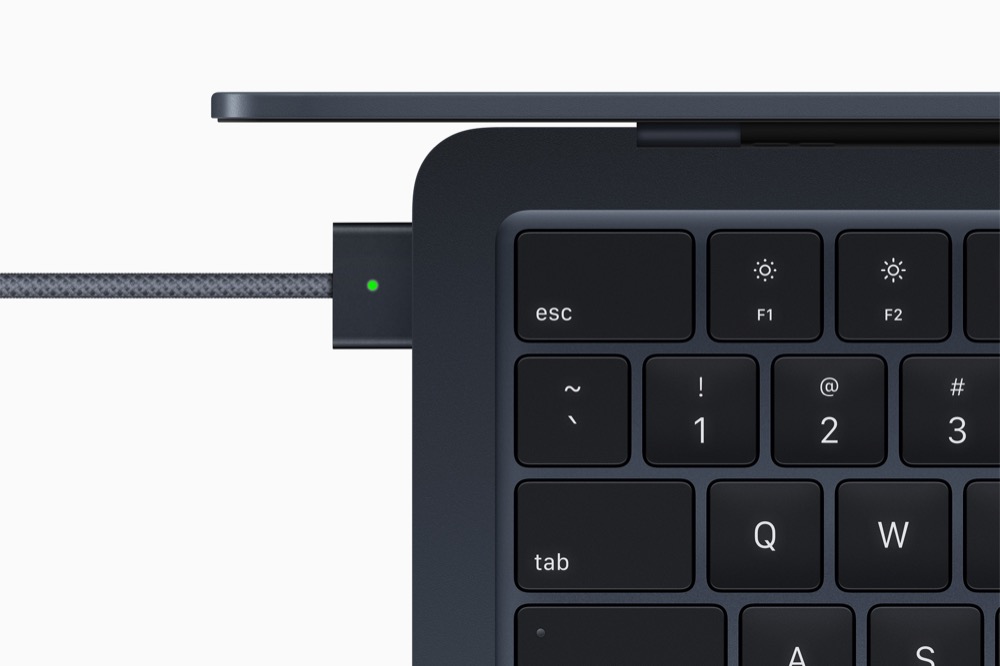
The new M2 MacBook Air has a MagSafe connection
The transition continues, not from Intel this time but from the first-generation M1 Apple silicon chip to Apple’s all-new M2 processor, introduced at WWDC 2022 and made available in two new Macs, MacBook Air and MacBook Pro.
The new MacBook Air and updated 13-inch MacBook Pro join the even more powerful 14- and 16-inch MacBook Pro with M1 Pro and M1 Max to round out the strongest line-up of Mac notebooks ever offered.
Both laptops will be available in July.
What Apple said about the new M2 Macs at WWDC
“We’re so excited to bring our new M2 chip to the world’s two most popular laptops — the MacBook Air and 13-inch MacBook Pro,” said Greg Joswiak, Apple’s senior vice president of Worldwide Marketing.
Referring to the MacBook Air, he added, “Only with Apple silicon can you build such a thin and light notebook with a fanless design, and this combination of performance and capabilities.”
[Also read: Apple Silicon Mac sales climb as PC industry slows]
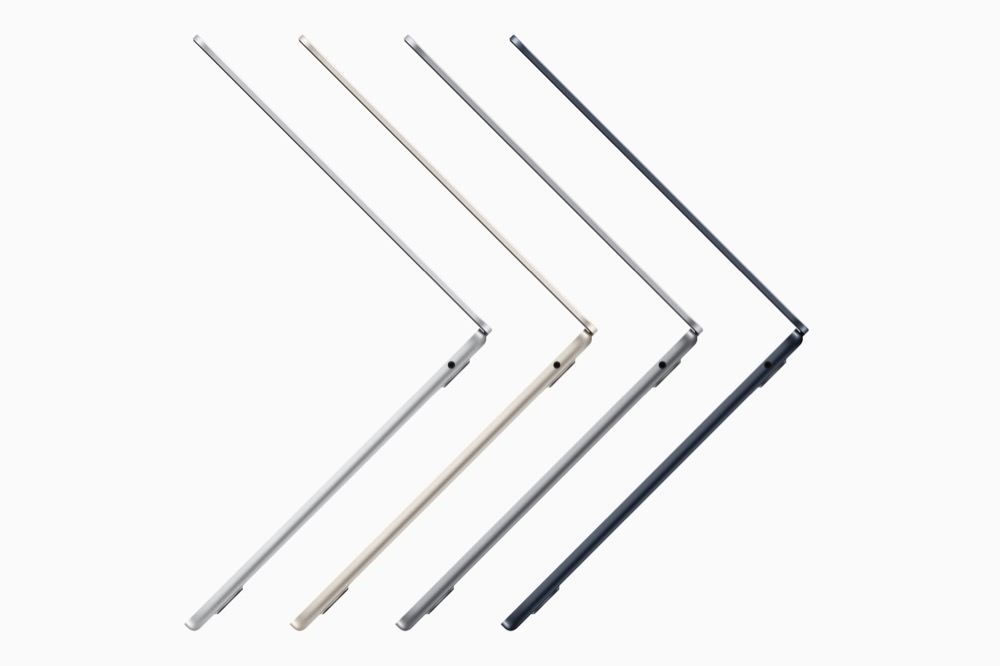
Available in four colours, the MacBook Air
So, what’s new in the M2 MacBook Air?
MacBook Air is thinner than before and available in four finishes, including silver, space gray, midnight, and starlight. It has a large 13.6-inch Liquid Retina display, 1080p FaceTime HD camera, four-speaker sound system, up to 18 hours of battery life, and MagSafe charging.
Encased in a durable, all-aluminum unibody enclosure, the Mac is 11.3 mm thin and weights just 2.7 pounds. The thin design makes for a 20% reduction in volume, so you’ll be able to fit this Air inside an even thinner office envelope.
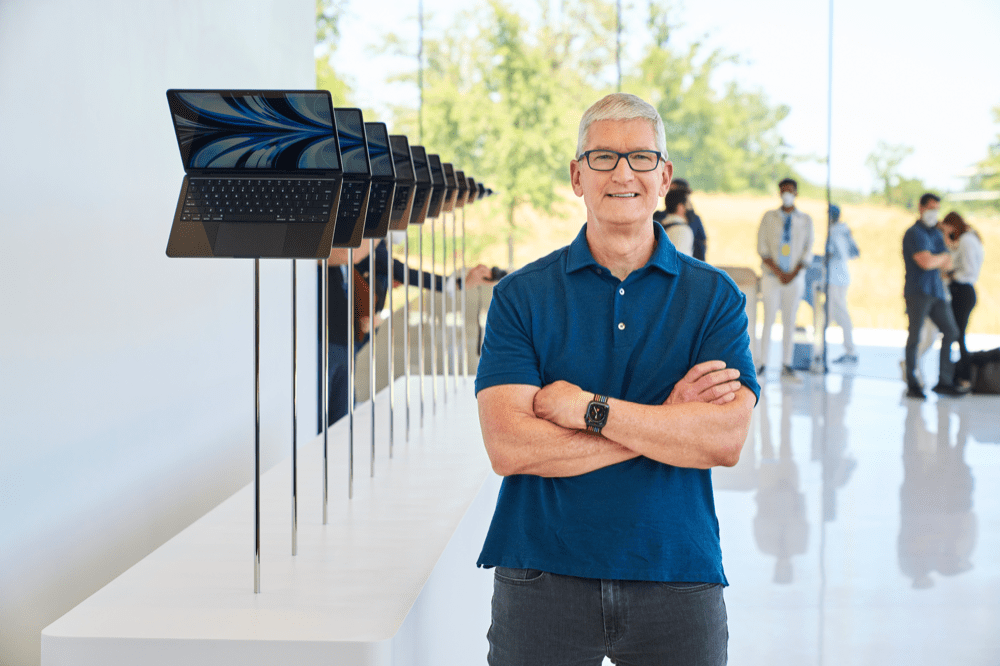
Apple CEO Tim Cook with a line of M2 Macs at the Steve Jobs Theatre at WWDC 2022.
Silent and fanless, the Mac also uses MagSafe, so your old connectors can still come in useful
I/O includes two Thunderbolt ports and 3.5 mm audio jack with support for high-impedance headphones. The Magic Keyboard features a full-height function row with Touch ID and a Force Touch trackpad.
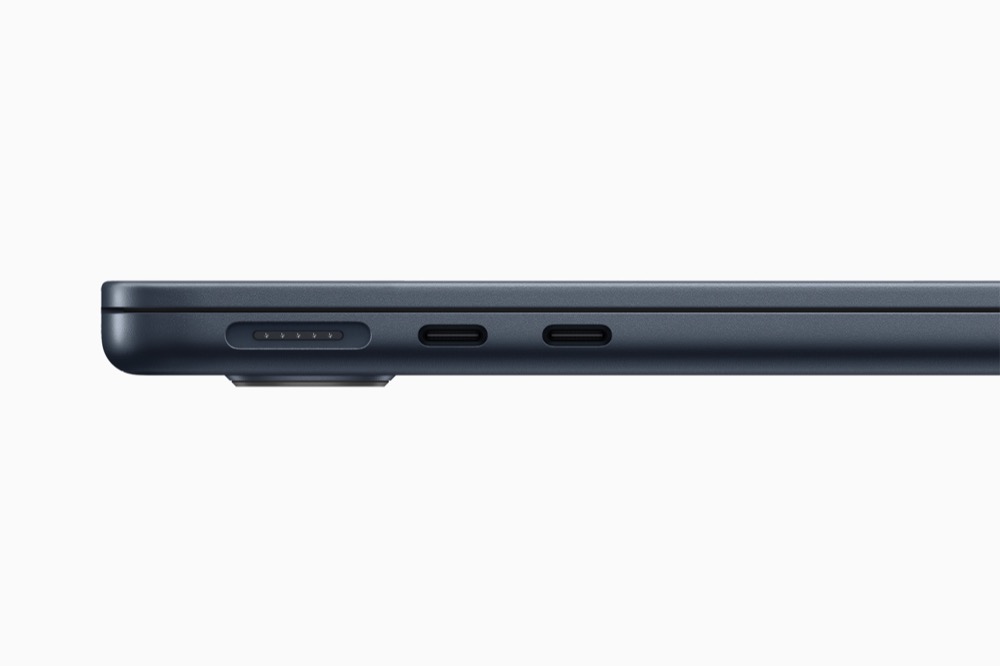
Here are all the Mac ports
The display seems impressive. You get a 13.6-inch Liquid Retina screen with much thinner borders, so you’ve got more screen than chassis. It’s bright – 500 nits, Apple said, and also supports 1 billion colors.
MacBook Air includes a new 1080p FaceTime HD camera with a larger image sensor for twice the resolution and low-light performance of the previous generation. A three-mic array captures clean audio using advanced beamforming algorithms, while the speakers produce improved stereo separation and vocal clarity. MacBook Air also supports immersive Spatial Audio for music and movies with Dolby Atmos.
The Mac supports fast charge for charging up to 50 percent in just 30 minutes with an optional 67W USB-C power adapter. Finally, you get up to eighteen hours battery life.
MacBook Air with M2 starts at $1,199 (US) and $1,099 (US) for education. Additional technical specifications are available at apple.com/macbook-air-m2.
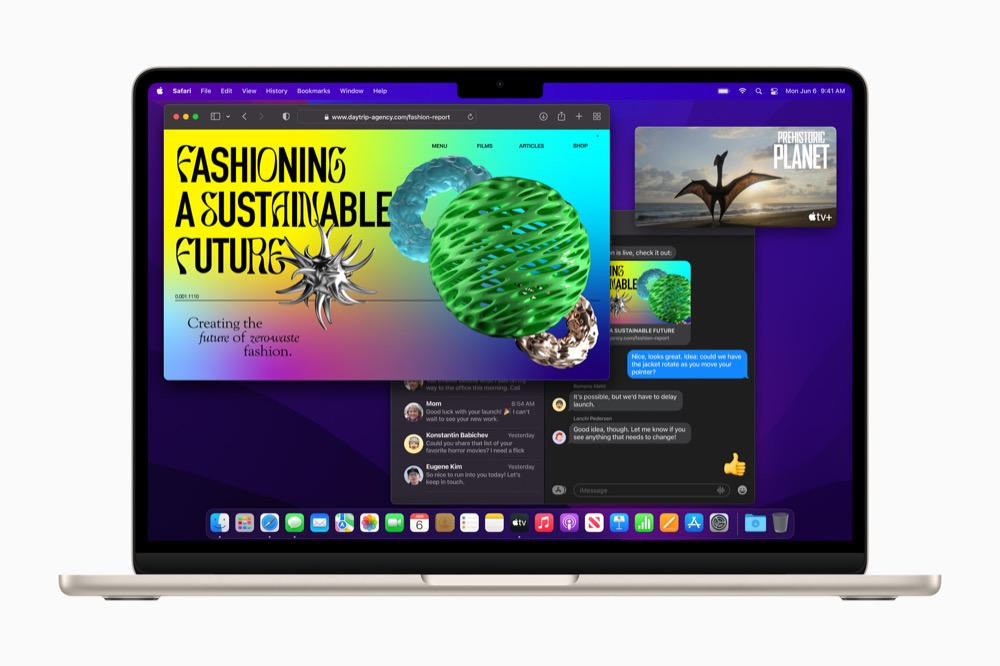
What does Apple claim about M2 MacBook Air performance?
Apple made a smattering of performance claims concerning the new M2 MacBook Air, teling us that:
- For intensive workloads like editing complex timelines in Final Cut Pro, performance is nearly 40 percent faster than the M1 MacBook Air.
- If you are using an Intel system you can achieve up to 15x the performance by upgrading to Apple Silicon, compared to the 1.6GHz dual-core Intel Core i5-based MacBook Air.
- Applying filters and effects in apps like Adobe Photoshop is up to 20 percent faster than before.
- That is up to 5x faster for customers that haven’t yet upgraded to Apple silicon.
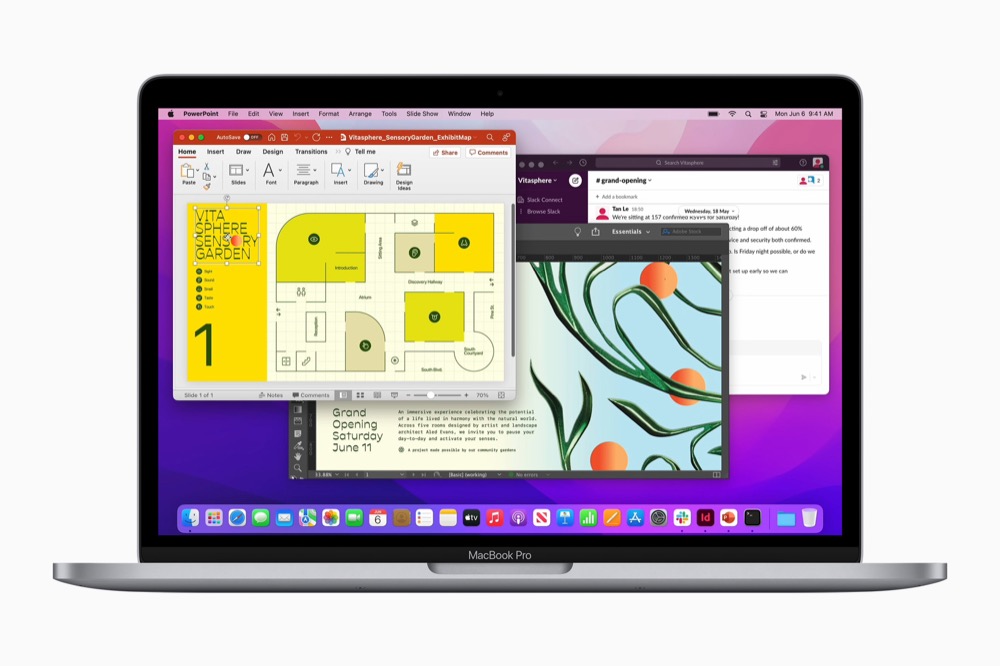
The MacBook Pro shows its multitasking skills
So, what’s new in the 13” MacBook Pro with an M2 chip?
The world’s second best-selling laptop the 13-inch MacBook Pro brings up to 24GB of unified memory, ProRes acceleration, and up to 20 hours of battery life, Apple said.
Most features remain unchanged – what happens in this upgrade is a good improvement in performance. That makes sense given how underpowered the smallest pro Mac had become in comparison with its more powerful siblings.
The new processor means the Mac can support up to 24GB of unified memory and 50 percent more memory bandwidth. It also supports ProRes encode and decode in the media engine of M2, so users can play back up to 11 streams of 4K and up to two streams of 8K ProRes video. Editors can convert their video projects to ProRes nearly 3x faster than before.
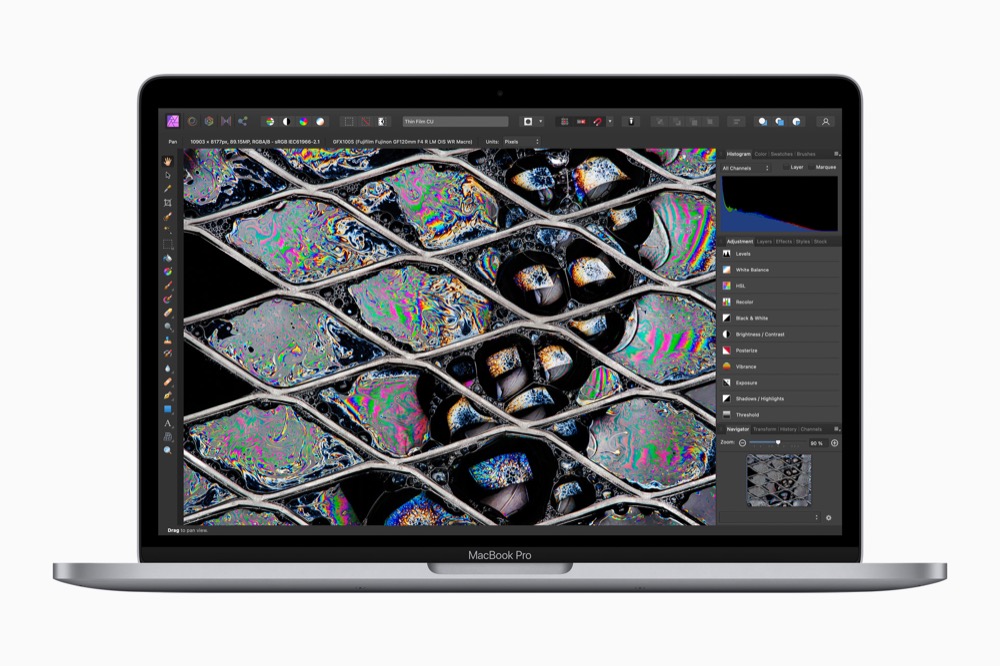
Those aren’t the only performance boosts. Apple claims the following:
- Working with RAW images in apps like Affinity Photo is nearly 40 percent faster than the previous generation, and up to 3.4x faster for users who are upgrading from a model without Apple silicon.
- Playing graphics-intensive games like Baldur’s Gate 3 is also nearly 40 percent faster than the previous 13-inch MacBook Pro, and up to 3.3x faster for customers upgrading from a model without Apple silicon.
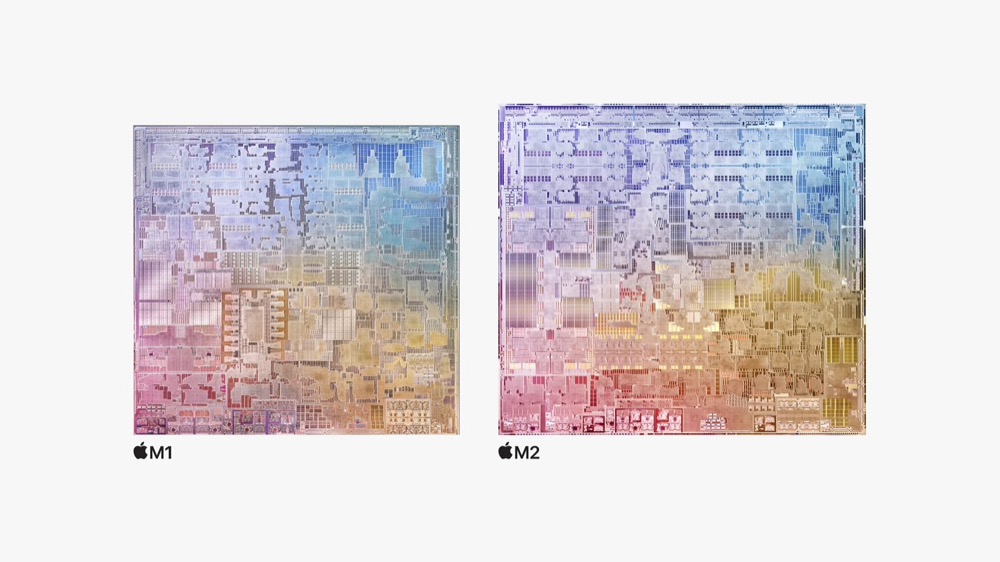
The M2 and M1 chip stand side by side at WWDC
What’s with the M2 processor announced at WWDC?
Described in more detail here, the M2 chip brings industry-leading power efficiency, a unified memory architecture, and custom technologies to make Macs running the processor more powerful while not requiring more electrical power.
M2 features a next-generation 8-core CPU with advancements in both performance and efficiency cores, along with Apple’s next-generation GPU, which now has up to 10 cores — two more than M1.
M2 delivers 100GB/s of unified memory bandwidth and supports up to 24GB of fast unified memory. It also adds a next-generation media engine and a powerful ProRes video engine for hardware-accelerated encode and decode, this makes it possible to play back more streams of 4K and 8K video than before.
The 13-inch MacBook Pro with M2 starts at $1,299 (US) and $1,199 (US) for education. Additional technical specifications are available at apple.com/macbook-pro-13.
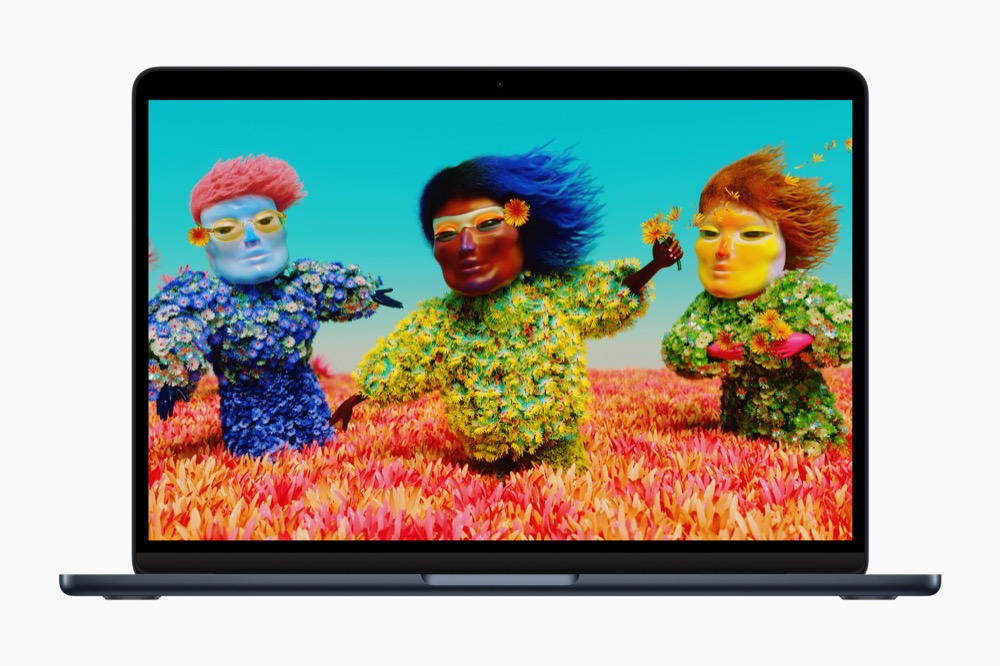
Apple’s green slide
Both the new MacBook Air and 13-inch MacBook Pro minimize their impact on the environment in several ways.
For example, they use 100 percent recycled rare earth elements in the enclosure magnets and MacBook Air uses 100 percent recycled aluminum in its enclosure and is the first Apple product to use certified recycled steel.
Both products meet Apple’s high standards for energy efficiency, are free of numerous harmful substances, and use wood fiber in the packaging that comes from responsibly managed forests.
Apple says that by 2030 every Mac Apple creates, from design to manufacturing, will be 100 percent carbon neutral.
Also read:
- WWDC22: What’s new in macOS Ventura? Quite a lot actually…
- WWDC: Apple surges forward, begins M2 chip transition
- WWDC22: Apple Watch gets big health upgrades
- WWDC, iOS: Lockscreen gains widgets, more ways to share
- WWDC opens doors with good news from AirPods & HomePods
- WWDC22: Apple makes devs API-er with Weather and more
- With iPad OS 16, Apple asks, ‘what’s a computer’?
- Apple’s ‘Innovation engine at full throttle’, Morgan Stanley
Please follow me on Twitter, or join me in the AppleHolic’s bar & grill and Apple Discussions groups on MeWe.




